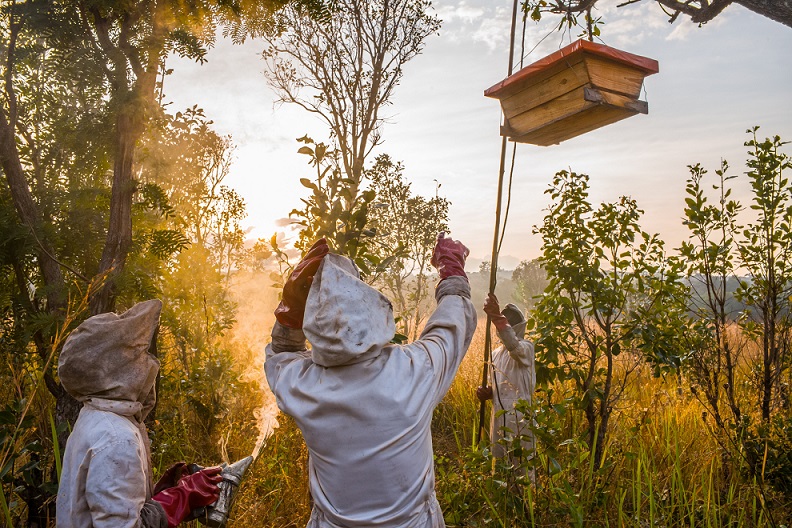From hive to bottle: Building transparency and trust through traceability
Nature’s Nectar is a Zambian honey company. Using modern beehives, they reduce deforestation, produce top-quality honey, and pay a price premium to farmers. Every single beehive is GPS located and tagged to a farmer in the system.
Nature’s Nectar uses a data tracking system to ensure full traceability of products. How important is this to your consumers?
Honey is one of the most adulterated food products in the world, typically ranked in the top three under milk and olive oil. Producers often add different types of sugars or syrups to dilute the honey and make more profits from cheaper sugars. This has created a distrust in honey authenticity and a need to verify where honey is produced. With the consumer market now really trying to understand exactly where their food is coming from, it’s important that we can prove as a supplier where the honey is produced and how. The traceability function we can provide gives full transparency and trust to our consumers, creating much higher value for our products.

How does access to detailed data have a demonstrated positive impact on farmers/beekeepers and their local communities?
The sole reason Nature’s Nectar utilizes this data is to prove transparency and fairness for our producers. This use of this data enables us to show that not only are farmers getting a higher price for honey produced, but it creates strong and trusting partnerships between us. Traceability has enabled us to enter into higher value markets, which then enables us to pay farmers the best price for honey produced. We are able to prove the impacts long-term as well, such as total amount produced from farmers and total payouts, which again creates this strong partnership and trust for a continued long-term relationship.
How does traceability help with demonstrating impact for fundraising purposes?
This helps us tremendously when it comes to fundraising and capital requirements. Just like any bank loan or seeking of finance, funders always need to see some kind of history for our operations. Due to the functionality of our impact traceability, we can easily pull data and show our impacts over time and how this not only brings benefits to our producers but also that we are able to perform. We can also send detailed reports of our progress and learnings over the years.

Is data tracking important for reaching new export markets, for example, in the EU?
We see the most important data for reaching new markets as the traceability function. Being able to 100% prove where our honey is produced and by which farmers brings us massive value in new markets, especially as most honey on the shelves currently passes through so many middlemen. The unique benefit of Nature’s Nectar is that we control our entire value chain, ensuring we produce, process and sell all of our honey from hive to bottle.
How do you use data to increase and/or verify your environmental impact?
Our aim at Nature’s Nectar is to use beehives as a way to protect the environment, with one beehive protecting one hectare of land. We do this by working with communities to first decide which areas they have determined are for beekeeping, and areas that they will protect and not use for farming or any other activities. The land is always under community ownership, and we use the data system to track the GPS locations of the beehives and create maps of areas where these hives are placed. We are then able to see protected land areas, as well as the difference in land areas with beehives as opposed to areas without beehives.
